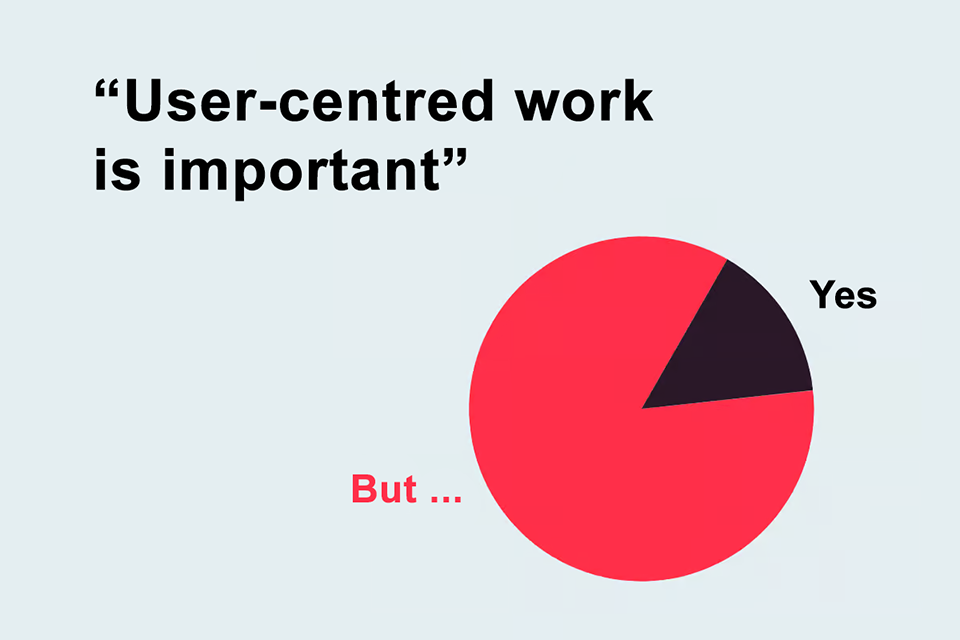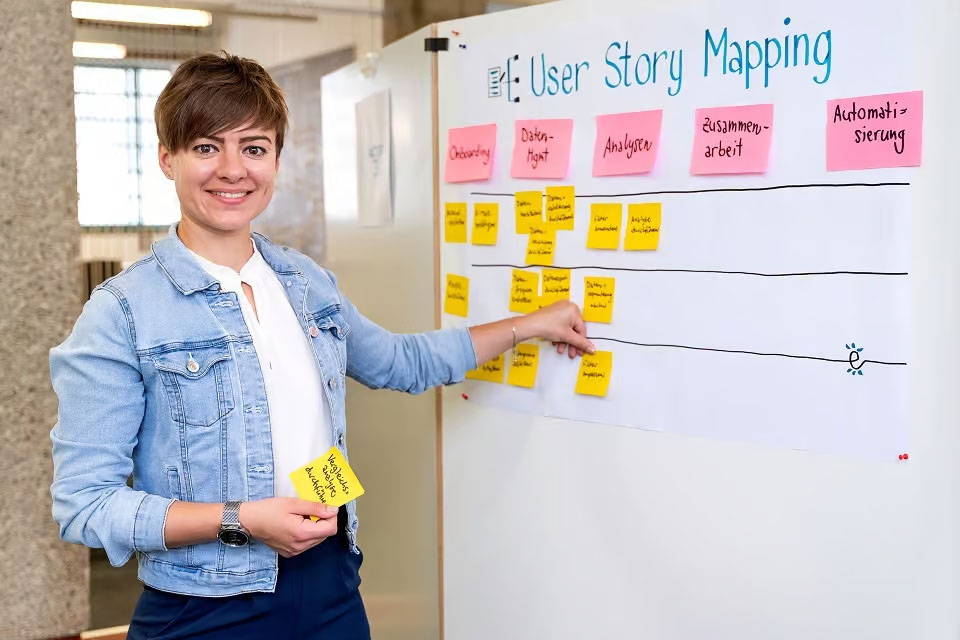5 reasons why you should prioritise user experience
User experience is always there
Reason #1 to prioritise UX: Customer satisfaction
Reason #2 to prioritise UX: Competitive advantage
Reason #3 to prioritise UX: Reduced support and training cost
Reason #4 to prioritise UX: Better decisions
Reason #5 to prioritise UX: Purpose
Conclusion
User experience (UX for short) is a term that is often used. Unfortunately, often incorrectly. This is because many people simply mean an appealing software interface. Or worse still, they even confuse the term with graphic design.
In fact, user experience is the entire experience that someone has when interacting with a product. By product, we also mean any type of software: be it the latest craze among smartphone apps, which we use to create AI-generated images, or the system we use to perform calculations, create configurations or manage data of all kinds in the office and production.
User experience is always there
Whether we like it or not, we cannot simply add or omit user experience as such – i.e. a concrete experience during use, including all impressions, reactions and moods of the users. What we can do, however, is ensure that this experience is as good, … no, better, as great as possible.
Those who develop and provide software themselves are of course happy to have satisfied users. However, user-centred work is not at the top of everyone’s list of priorities. (And, if we’re being completely honest, it’s often not even on the list…) After all, there are sales to be made and other crucial business goals to be achieved.
- increase sales,
- reduce costs and
- fulfil other crucial KPIs.
But read for yourself:
Reason #1 to prioritise UX: Customer satisfaction
A positive user experience is immensely important for customer satisfaction. If users find the software user-friendly, intuitive and pleasant, they may use it more often and prefer to use it. This often happens unconsciously, because good user experience is invisible. “Invisible” in the sense that everything runs smoothly and there are no hurdles.
In addition to an intuitive and easy-to-use interface, it is also important that the target group quickly understands the added value of using the software. A smooth onboarding process provides security right from the start. Depending on the type of application, personalisation of certain functions or a seamless transition when used on multiple platforms (e.g. mobile, desktop, smartwatch) can also be decisive for this satisfaction.
In addition, satisfied users are also more likely to recommend the product to others and thus help to acquire additional customers. Which brings us to the next point.
Reason #2 to prioritise UX: Competitive advantage
In a competitive market, a good user experience can be a key differentiating factor. If a software offers a superior user experience compared to competing products, it has a better chance of scoring points in the long term.
Which app would you be more likely to recommend to your friends? The one that you hardly enjoy yourself because something unforeseen always happens? Or the other one, where you know exactly what works and how?
In the B2B context, users usually cannot choose whether they want to use a particular software or not. Replacing complex systems is also not comparable to deleting a smartphone app. Nevertheless, no company is interested in working with software that makes life difficult for its employees in the long term.
Reason #3 to prioritise UX: Reduced support and training costs
Software with a good user experience minimises the demand for extensive customer support and initial training costs. If users can easily understand and use the product, they need less support. This leads to lower support costs and thus saves money or creates resources that can be used for other areas.
In the software itself, intuitive processes and self-explanatory design help to take the needs of the target group into account. This means that the software can be used without the need for extensive explanations or external help.
Documentation is also part of a good user experience – if it doesn’t come in the form of a manual hundreds of pages thick, gathering dust on a disc drive. Support and input is required at one point or another, especially for more complex applications. Context-related help functions such as tooltips, in-app tutorials and user guides help at exactly the right point in the software so that the current process does not have to be interrupted. This type of help not only prevents frustration among users, but also a high number of support requests.
Reason #4 to prioritise UX: Better decisions
If you want to create a good user experience, you need to know your target group well. Interviews, usability tests and other UX research measures collect valuable data that helps with product and direction decisions, both large and small.
Much of this data is qualitative in nature and perfectly complements the quantitative data already available in the company. Questions about the context of software use help to better understand the challenges faced by users: What problem do we want to solve with our software? Why exactly does this or that make the everyday life of our target group difficult or tedious?
Katharina Liedl in action, photo: © Barbara Aichinger
Reason #5 to prioritise UX: Purpose
If we understand who we are solving which problem for and why, this helps with product development and decision-making. However, another human factor is also important here:
The team that conceives, designs and implements the software is made up of people who regularly visit their workplace Monday to Friday to do so. You may call it purpose or you may be tired of the term, but one thing is certain: Anyone who not only sits in meetings, holds workshops, formulates User Stories, creates wireframes, designs user flows and writes lots of code, but also knows why he or she is doing it, has another reason to be motivated to open their laptop in the morning.
The reason may be to give sales employees more time for customer relations and less for tedious documentation. Making it super easy for stressed people to book a hairdressing appointment online. Providing customers with the best possible support when configuring a personalised product. And, and, and.
Instead of just creating software, it’s nice to know that we’re solving real problems for real people.
Conclusion
The first step towards a good user experience is to understand that there is more to UX than just beautiful design. If you do this and then really listen to the people in your target group in order to understand them, you are already a big step further. Good user experience can be a tool that contributes positively to key business figures in a variety of ways.
As invisible as good user experience itself is, the effects it has are visible and tangible. Because business goals and great UX are not mutually exclusive. In fact, I would say quite the opposite!
Notes:
Would you like to put on your user glasses with Katharina Liedl and find out what your users really need? Then simply get in touch via her beautiful website. There you will also find Katharina’s blog, which is well worth reading.
Are you familiar with the so-called Action Priority Matrix? It may also help you to prioritise user experience.
If you like the article or want to discuss it, feel free to share it in your network.

Katharina Liedl
Katharina Liedl supports companies in developing user-centred software with real added value for business and users. She has worked as a product owner since 2016 and has been self-employed since 2021. When working with her clients, Katharina mediates between business and IT, takes on interim roles in product management and brings her UX mindset to existing teams and new processes. She regularly shares her knowledge of UX and product topics on LinkedIn.

